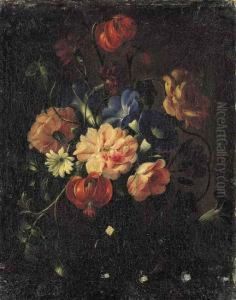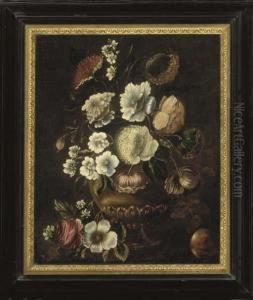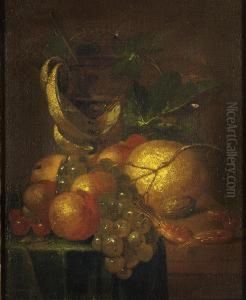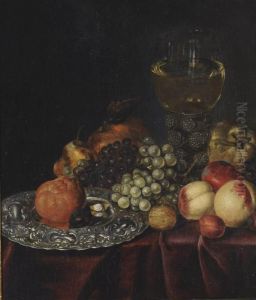Heem De Jan Davidsz & Studio Paintings
Jan Davidsz. de Heem, born in Utrecht, Netherlands, in 1606, is renowned for his intricate still-life paintings which often depicted a lush variety of objects ranging from flowers, fruit, and glassware to more symbolic items like skulls, all with an exceptional attention to detail. His work is a prime example of Baroque still life, and he is particularly celebrated for his mastery of color and light.
De Heem moved to Leiden around 1625 and later settled in Antwerp in 1636, where he became a part of the Guild of Saint Luke. It was here that he was exposed to the influence of Flemish Baroque, which is evident in the richness and complexity of his compositions. His work from this period shows a blend of both Dutch and Flemish artistic traditions.
He became one of the most esteemed still-life painters of his time, and his works were highly sought after. De Heem's studio was a busy and productive place, with his sons, as well as other pupils, contributing to paintings that were in high demand. These studio works were often collaborative, with de Heem overseeing the production and adding final touches.
His paintings are characterized by opulence and a fine attention to the textures of surfaces, from the dew on a piece of fruit to the reflection on a glass vase. De Heem was adept at capturing the transient beauty of life, which was often underscored by the inclusion of vanitas elements, reminding viewers of the fleeting nature of earthly pleasures.
Jan Davidsz. de Heem's influence extended beyond his lifetime, with his work not only being collected by wealthy patrons during his time but also continuing to be celebrated for its technical brilliance and beauty. He died in Antwerp in 1684, leaving behind a legacy of some of the most exquisite still-life paintings from the Dutch Golden Age.









